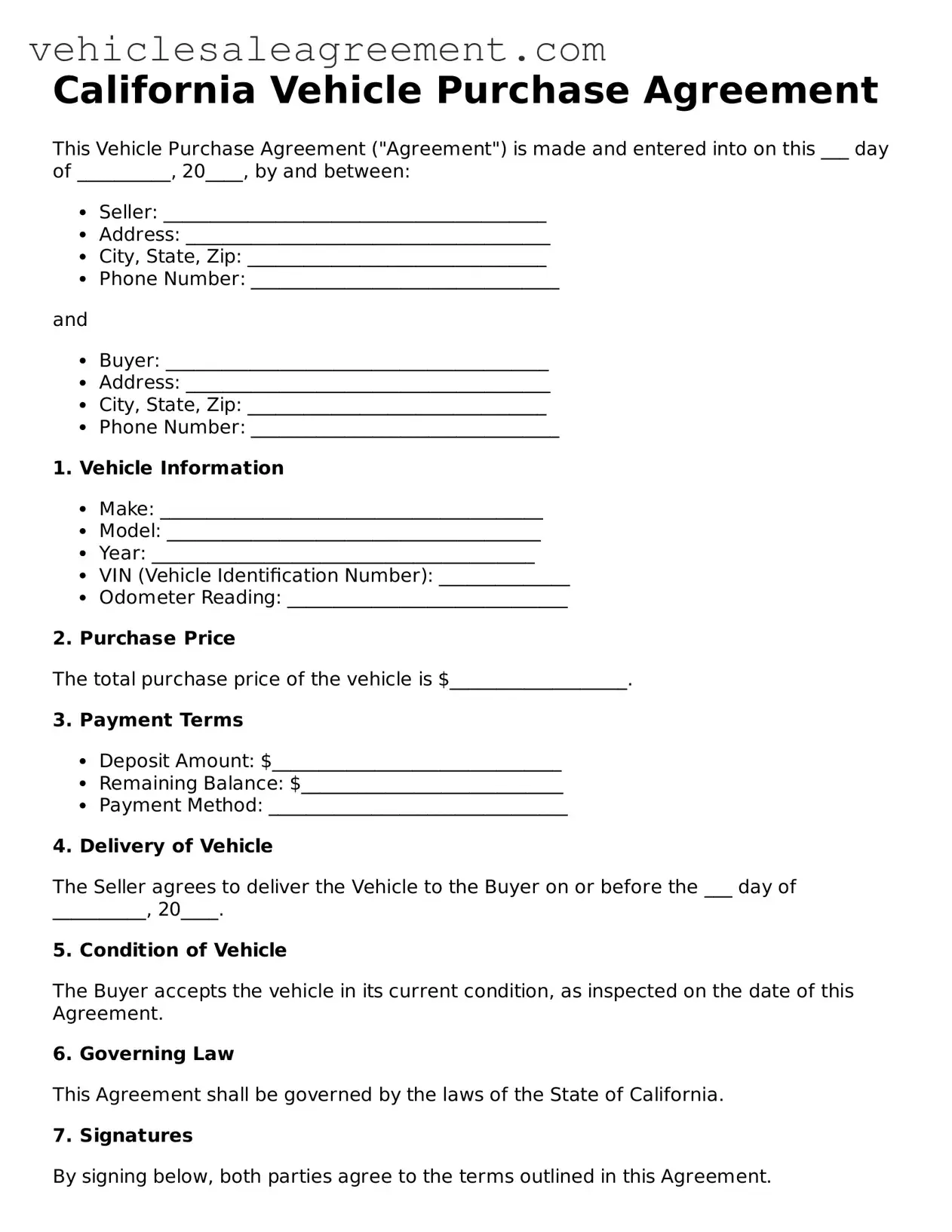What is a California Vehicle Purchase Agreement?
A California Vehicle Purchase Agreement is a legal document that outlines the terms and conditions of the sale of a vehicle between a buyer and a seller. This agreement serves to protect both parties by detailing important information such as the purchase price, vehicle identification number (VIN), and any warranties or conditions related to the sale.
Why is a Vehicle Purchase Agreement important?
This agreement is crucial because it provides a clear record of the transaction. It helps prevent misunderstandings by documenting the expectations of both the buyer and seller. In case of disputes, having a signed agreement can serve as evidence in legal proceedings, ensuring that both parties are held accountable to the terms agreed upon.
What information should be included in the agreement?
The agreement should include essential details such as the names and addresses of both the buyer and seller, the vehicle's make, model, year, and VIN, the purchase price, and the date of the transaction. It may also specify payment methods, any deposits made, and any additional terms, such as warranties or conditions of sale.
Do I need a lawyer to create a Vehicle Purchase Agreement?
While it’s not necessary to hire a lawyer to draft a Vehicle Purchase Agreement, it can be beneficial to seek legal advice, especially for complex transactions. Many online resources provide templates that can help you create a basic agreement. However, if you have specific concerns or unique circumstances, consulting a legal professional can provide peace of mind.
Can I modify the Vehicle Purchase Agreement?
Yes, you can modify the agreement to suit your needs, but both parties must agree to any changes. It’s important to document these modifications clearly and have both parties sign the updated agreement. This ensures that everyone is on the same page and reduces the potential for disputes later on.
What happens if the seller fails to uphold the agreement?
If the seller does not fulfill their obligations as outlined in the agreement, the buyer may have legal recourse. This could involve seeking damages or specific performance, which means asking the court to enforce the terms of the agreement. It’s advisable to keep a copy of the signed agreement and any related correspondence to support your case.
Is a Vehicle Purchase Agreement required by law in California?
While California law does not mandate a written Vehicle Purchase Agreement for every vehicle sale, having one is highly recommended. It provides legal protection and clarity for both parties. For sales involving dealerships, a written agreement is typically required, which ensures compliance with state regulations.
How do I ensure the agreement is valid?
To ensure the validity of the Vehicle Purchase Agreement, both parties should sign and date the document. It’s also wise to have a witness or notary public present during the signing. Keeping copies of the signed agreement for both the buyer and seller will help maintain a clear record of the transaction.
